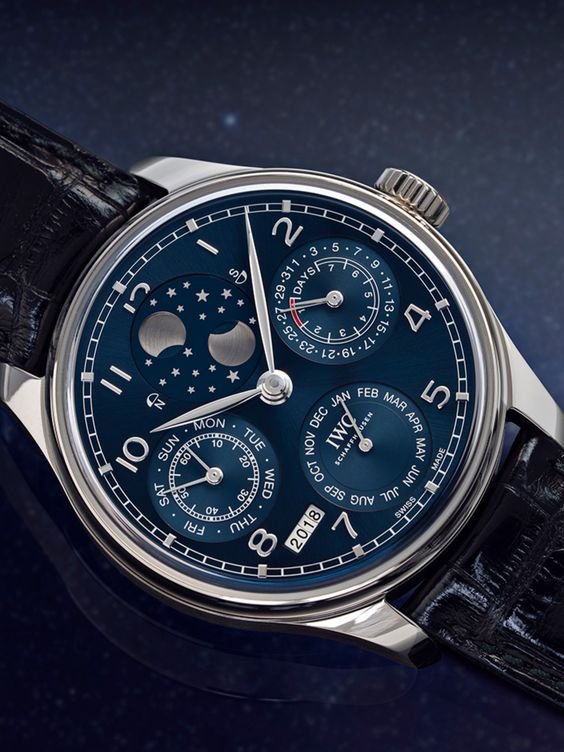Which manufacturer are you going to choose to invest your money? IWC or Omega?

Published: Jun 15, 2021
IWC vs Omega:
How do Omega and IWC measure up to one another when debating which manufacturer to invest your money in? Both brands are highly creative and have released some models that make for great investments. Whether it’s water resistance, materials, style or features you’re looking for, these two brands which are amongst some of the most recognized within the watch industry have contributed largely to the art of watchmaking in one way or another. We’ve created this crash course to help give you a well-rounded review of each brand in terms of its history, its most popular collections, and its price list.
History
Omega’s story began in 1848 when Louis Brandt set up a shop on 51 La Promenade Street in La Chaux-de-Fonds. It would become the second most recognized watch brand in the world. In 1905 Omega earned its title of Official Timekeeper of the Olympic Games in LA – a partnership that is as strong as ever to this present day. In 1948 the Seamaster was released. 14 years later the brand would become recognized once again but this time not for their diver’s models – for creating the first watch to the moon in 1969. The Speedmaster Professional is still one of the brand’s most popular collectibles today. Throughout the last 20 years, Agent 007 has worn the Seamaster on his wrist in the James Bond films, further enhancing the desirability of an Omega watch.
Watchmaker Florentine Ariosto Jones founded IWC in 1868 turning his vision for creating Swiss-made pocket watch movements for the American market into reality. In 1939, captains and officers of the Portuguese merchant navy needed a large-sized watch that would run as precisely as a marine chronometer – the result was IWC Schaffhausen’s Portugieser watch. 11 years later the brand would create the Ingenieur, powered by the Caliber 85. It would use the movement of the rotor in both directions to wind the mainspring. Other successes include the Portofino, the 1967 Aquatimer and the Big Pilot’s watch.
Popular IWC collections:
The Big Pilot's watch:
The IWC Big Pilot’s watch is a direct descendant of the Große Fliegeruhr - a big pilot's watch from 1940. Over time the watch has been down-sized from a 55mm to a 46mm, endowed with a large conical crown for operating through pilot’s gloves. Watches from this series are available in steel, gold, bronze, ceramic, titanium and platinum. Some models feature perpetual calendars and moon phase indicators, geared towards collectors with a love for complication watches.

IWC Pilot's watch Chronograph Spitfire
Reference: IW387901
Case/Dial: 41mm Steel, Black
6 bar
Movement: 69380, Self-winding
Functions: Date, Calendar, Chronograph, 46h power reserve
Strap: Textile
Style: Military
The Aquatimer:
Aquatimer watches are a versatile Swiss diving watch. They make for a nice alternative to the Omega Seamaster watches if you prefer a classic-diving watch at a more affordable price. That said, there are rare limited edition timepieces that cost considerably more. Some IWC Aquatimer watches are water-resistant to 2000 meters. You can also purchase chronograph versions and diver’s watches with a perpetual calendar.

IWC Aquatimer Chronograph Edition "Expedition Jacques-Yves Coustenau"
Reference: IW376805
Case/Dial: 44mm Steel, Blue
30 bar (300 metres / 1000 feet)
Movement: 79320, Self-winding
Functions: Date, Calendar, Chronograph, 44h power reserve
Strap: Blue rubber
Style: Chronograph
Portugieser:
Everything from the elegant chronograph to the Grande Complication (with perpetual calendar, minute repeater, and chronograph) can be found within this collection by IWC Schaffhausen. If you like the more technical-looking side to IWC’s finest offerings, you can expect to pay quite a bit more for these Portugieser models. Some automatic models from the range are powered by calibers equipped with a 7-day power reserve. Others feature a flyback chronograph that will allow you to stop, reset and start a new timing with one simple push of a button.

IWC Portuguese Perpetual Calendar Double Moonphase
Reference: IW503401
Case/Dial: 44.2mm White gold, Blue
3 bar
Movement: 52615, Self-winding
Functions: Date, Calendar, Chronograph, Power reserve display, 168h power reserve
Strap: Crocodile skin
Style: Elegant
Popular Omega collections:
Seamaster:
Retro diver’s models and state-of-the-art tools make up this large collection of diving diver’s watches from Omega. Since the collection began in 1945, Omega has continued to evolve its most successful models, introducing new designs, new calibers, and new materials to enhance efficiency and improve overall performance. The series is home to the Planet Ocean 600M, the Aqua Terra 150M, the Diver 300M, the Bullhead, and the Ploprof 1200M. The Seamaster Diver 300M as its namesake suggests is water-resistant to 300 meters and is fitted with a helium escape valve, a unidirectional bezel and various case sizes of 28, 36 and 41mm (the larger of which is powered by an automatic movement).

Omega Seamaster 300M Co-Axial GMT 2535.80.00
Reference: 2535.80.00
Case/Dial: 41mm Steel, Blue
30 bar (300 metres / 1000 feet)
Movement: 2628, Self-winding
Functions: Date, Calendar, GMT, 48h power reserve
Strap: Steel
Style: Chronograph
Speedmaster:
The Speedmaster is Omega’s famous chronograph watch. It was the first to land on the moon. You can choose between an automatic movement and a quartz model in this collection – the mechanical versions are powered by Omega’s Co-Axial escapement which the brand purchased from British watchmaker George Daniels. Omega has been slowly making them a standard component in their watches, providing overall enhanced mechanical efficiency. The Speedmaster Professional watch is characterized by its engraved tachymeter bezel and its 200-meter water-resistant steel case, making it a universal favorite not to mention a great investment piece.

Omega Speedmaster Moonwatch Professional Chronograph
Reference: 311.30.42.30.01.006
Movement: 1863, Self-winding
Functions: Date, Calendar, Chronograph, Tachymeter, 48h power reserve
Strap: Steel
Style: Chronograph
Constellation:
The Constellation watches from Omega are recognizable for their “Griffes” or “Claws” located at each side of their case. If you’re looking for a classic dress watch, these models communicate the traditional craftsmanship and sophisticated look that you’re going to want to achieve with a smart suit. The Constellation was also the first chronometer series of Omega’s catalog.

Omega Constellation Chronometer
Reference: 123.20.38.21.02.002
Case/Dial: 38mm Steel, White
10 bar (100 metres / 330 feet)
Movement: Omega Calibre 8500, Self-winding
Functions: Date, Calendar, 60h power reserve
Strap: Steel
Style: Classic
Prices
Omega’s entry-level watches start at around $2400. The Seamaster 300 is the brand’s most affordable watch, costing around $4500. The middle of Omega’s price list comprises the Aqua Terra GMT in steel with a second-time zone costing a little under $6k. Top-end models include the platinum Constellation with tourbillon and a skeletonized movement, costing up to $250,000. Generally speaking, Omega watches tend to hold their value better than IWC watches since they’re the more recognized brand out of the two. They’ve also created iconic pieces like the Speedmaster. That said, people will spend a lot of money on watches that are less mainstream and more niche, like IWC. A Portugieser Chronograph watch can be purchased for around $6-7K, similar to the Aquatimer, yet the Portugieser Grande Complication costs around $209,000 since it boasts a total of 20 complications, showcasing IWC’s finest watchmaking expertise.
Conclusion:
Noteworthy designs from Omega include The Planet Ocean, the Speedmaster Chronograph watch, the Seamaster Professional 300M, the Aqua Terra, the DeVille, and the Constellation Globemaster. If you’re in the market for a diver’s watch and you want your watch to reflect a bold statement, Omega’s robust watches are not only status symbols, but they prove more than capable of answering your every need whilst exploring deep and daring depths of water. IWC Schaffhausen, on the other hand, is specialized in creating watches built with impressive complications like its perpetual calendars, off-center power reserve indicators, and moon phases. If you have a sweet spot for pilot’s watches or traditionally crafted timepieces – IWC Schaffhausen’s conventional and classic approach to watchmaking is the best option for you.